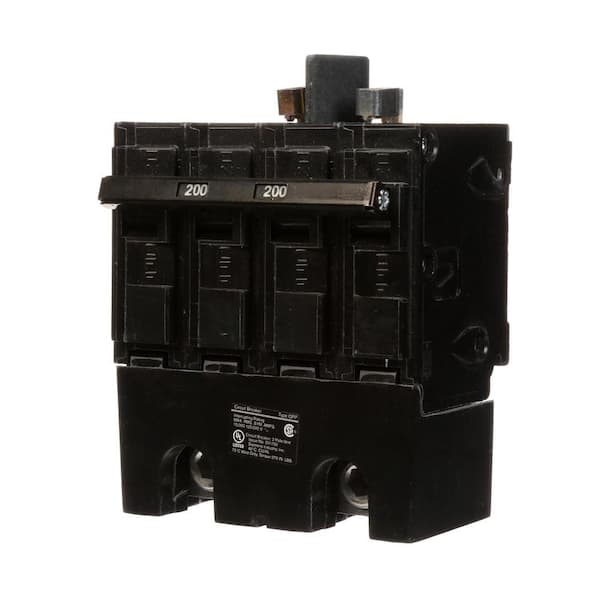Ever stared at your electrical panel and wondered, “Do I have a 200 amp breaker in here somewhere?” You’re not alone. Plenty of homeowners get told they need a 200 amp panel or breaker, but nobody ever explains what one actually looks like — or where to even start looking.
Let’s fix that.
In this article, we’ll break it down in plain English. No technical mumbo jumbo — just real-world advice from someone who’s opened more panels than they can count.
We’ll walk through what a 200 amp breaker looks like, where to find it, and how to tell if it’s already installed in your home. Whether you’re prepping for an upgrade or just curious about your setup, you’ll walk away knowing exactly what to look for (and what to avoid).
First Things First: What Is a 200 Amp Breaker?
Before we get into looks, let’s talk about what this breaker does.
A 200 amp breaker is basically the main switch for all the power coming into your home. It sits at the top (or sometimes bottom) of your main panel, and it’s what your entire house runs through. Think of it like the gatekeeper for everything — if it trips, your whole house goes dark.
Most modern homes have either a 100, 150, or 200 amp service. If your house was built in the last couple decades, there’s a good chance you’ve already got a 200 amp breaker — especially if your home has things like central AC, electric heat, or a hot tub.

What Does a 200 Amp Breaker Actually Look Like?
This is where things get a little less obvious. The 200 amp breaker doesn’t glow or flash or have a big label saying, “Hey, I’m 200 amps!” But there are some telltale signs to spot it.
1. Size and Position
- It’s larger than the rest of the breakers in your panel.
- Usually located right at the top (or bottom if the panel is upside down).
- It’s a double-pole breaker, so it’ll take up two spaces.
2. Labeled Clearly
- Look closely — most have a number printed on the switch itself. It should say “200.”
- Sometimes the panel cover will list it on a diagram.
3. Panel Placement
- It’ll be in the main panel — not a subpanel or garage circuit box.
- If your panel says “main breaker” and shows 200A, that’s it.
4. Heavy-Duty Feel
- These breakers are chunky. Thicker, heavier, and more solid than your standard ones.
Real-World Examples by Brand
Different brands package them differently, but the essentials are the same. Here’s a quick breakdown:
| Brand | Description | What to Look For |
|---|---|---|
| Square D | Homeline or QO series | Black handle, big “200” print |
| Siemens | QN Series | Gray switch, flat design |
| Eaton | BR or CH Series | Tall, thick body |
| GE | THQL series | Slimmer, tall profile |
No matter the brand, the 200 amp breaker stands out because of its size and label. If you’re still not sure, take a photo and show it to someone at your local electrical supply store. They’ll spot it in seconds.
Do You Need a 200 Amp Breaker?
Here’s the deal. You don’t always need 200 amps, but it depends on your lifestyle. If you have or plan to get:
- Central air conditioning
- An electric vehicle charger
- Electric water heater
- A hot tub or sauna
- A second kitchen or workshop
…then yeah, you probably need that 200 amp service. Even if you’re not using that much power today, future-proofing your home can save you a big headache later.
Already Have One? How to Tell
Let’s say you’re staring at your panel right now. Here’s how to confirm if you already have a 200 amp breaker:
- Check the label on the main switch. If it says “200” in big numbers, you’re good.
- Look at the metal tag inside the panel door. It often lists the maximum amperage.
- Ask an electrician. Honestly, if you’re unsure, it’s worth paying for peace of mind.
Also, don’t confuse a 200 amp panel with a 200 amp breaker. Sometimes you might have the right panel but a smaller breaker installed. Double-check the breaker itself.
Installation Notes & Safety Tips
Thinking about upgrading? Here’s what you should know:
- Don’t DIY this. Seriously. A 200 amp breaker connects directly to your home’s incoming power lines. Hire a licensed pro.
- Permits are usually required. Check with your city before making any changes.
- Upgrades take planning. You may need a new panel, meter, or wiring to support it.
Common Misconceptions
Let’s clear up a few things:
- More amps doesn’t mean more electricity is used. It just allows more to be used if needed.
- Not all new homes have 200 amp service. Smaller or older homes may still be at 100 or 150.
- It’s not a status symbol. It’s just about matching your electrical capacity to your lifestyle.
Final Thoughts
Knowing what a 200 amp breaker looks like can save you time, money, and future frustration. Whether you’re troubleshooting, planning upgrades, or just getting familiar with your home’s electrical system, this breaker is a big part of the picture.
So next time someone throws the phrase “200 amp breaker” at you, you’ll know exactly what they’re talking about — and maybe even surprise them with what you know.
Need help figuring out your panel? Reach out and let us take a look.

